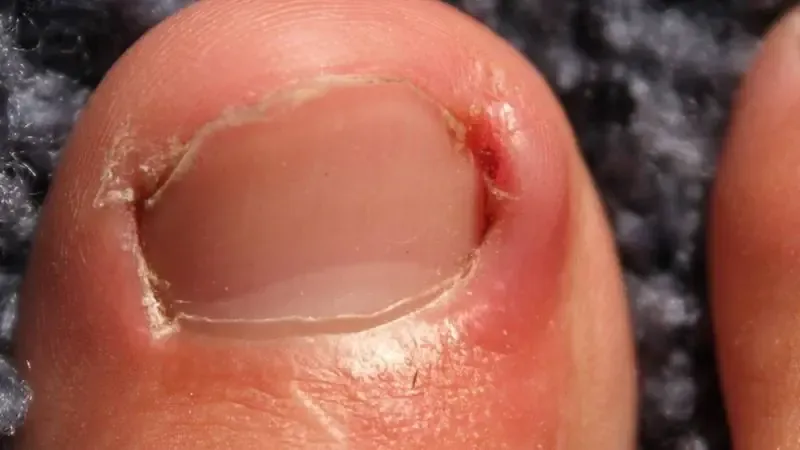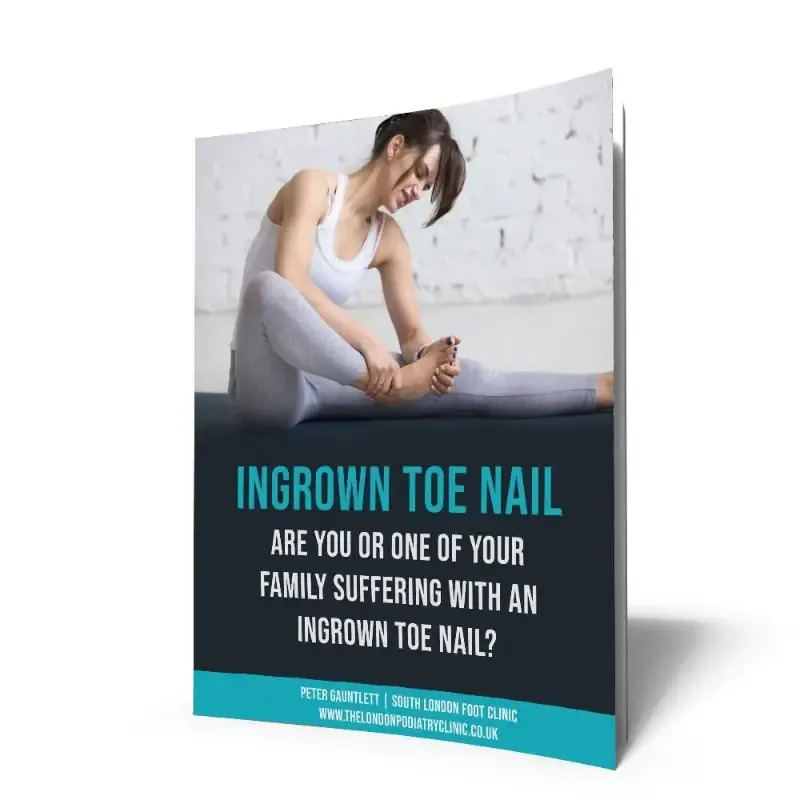Ingrown Toenail Treatment in Honor Oak
You do not have to put up with the pain and discomfort of an ingrown toenail.
Ingrown Toenails are common and painful but easy to treat.
First of all, let's reassure you that ingrown toenails are extremely common. We see and treat hundreds, if not thousands of them each and every year.
They can be extremely painful, especially if you are one of the many people who have suffered in silence with them for many years.
Thankfully, ingrown toenails can be easily treated at South London Foot Clinic.
If caught early enough, treatment may involve a simple clearing out of the side of the nail which may be a standard part of our chiropody treatment... Which is pain free.
If the ingrown toenail has been around for a long time, then it may require other methods of treatment which will be effective in the long-term removal of the pain.
Feel free to click the link below to book a call with us. You can ask questions, get booked in or learn more before you make the choice to get rid of the ingrown nail once and for all.
Even if you call us, there is no obligation to book any appointments until you're completely happy that we can help.
We're here to help you make an informed decision even if you choose not to come to us. We want you to enjoy a comfortable and pain-free life.
A Quick Guide To Ingrown Toenails:
We believe it's important to be informed and understand things before you commit to getting help, so below we'll outline some information we think you will find useful before you get treatment.
What is an Ingrown Toenail?
An ingrown toenail (also known as onychocryptosis) is by far the most common issue our podiatrists and chiropodists see on a daily basis.
It is a common condition that occurs when the edge of a toenail grows into the surrounding skin, leading to pain, redness, swelling, and sometimes infection.
This almost always affects the big toe but can occur in any toenail and there may be a whole range of reasons why ingrown toenails occur.

What Causes Ingrown Toenails?
- Improper nail trimming: Cutting toenails too short or rounding the edges can encourage them to grow into the skin.
- Tight-fitting shoes: Wearing shoes that squeeze the toes or put pressure on the toenails can cause them to curve and grow into the skin.
- Trauma: Stubbing your toe or having it stepped on can lead to an ingrown toenail.
- Genetics: Some people may be genetically predisposed to ingrown toenails.
The Symptoms of Ingrown Toenails:
People tend to ignore the early signs of an ingrown toenail, choosing to 'live with the pain until it becomes a bit too much.
It is often better to pay attention to the early signs and see advice and treatment if you experience the following:
- Pain and tenderness along the side of the toenail.
- Redness and swelling around the affected area.
- Infection and pus can occur in severe cases if left untreated.
- Difficulty walking or wearing shoes comfortably.
How To Prevent Ingrown Toenails:
- Trim your toenails straight across, avoiding rounding the corners or digging into the skin surrounding your nails.
- Wear properly fitting shoes that provide enough room for your toes.
- Maintain good foot hygiene by keeping your feet clean and dry.
- Ask if you have a family history of ingrown toenails, which may be a good indicator that you should exercise caution with nail care.
The causes of ingrown toenails and the length of time you've had them will often dictate the best course of treatment.
It is vital to seek professional attention if you have a severe ingrown toenail, signs of infection, or if the condition hasn't improved with home care
Our podiatrists can provide appropriate treatment and guidance to prevent future occurrences.
Expert Ingrown Toenail Treatment:
- Partial toenail removal (partial nail avulsion): For recurrent cases, a podiatrist may need to remove the ingrown portion of the nail. This is typically done under local anaesthesia to make it as pain-free as possible.
- Full toenail removal: In very severe or chronic cases, the entire toenail may need to be removed to prevent further ingrown toenails. The nail should eventually grow back.
- Nail braces: Sometimes our podiatrists may use a specialised nail brace to help guide the toenail to grow correctly.
- Surgery: In some (rare & extreme) cases, surgical procedures such as a matrixectomy (removal of the nail matrix to prevent regrowth) may be necessary.
- Antibiotics: If there is an infection, your doctor may prescribe oral antibiotics to treat it.
Learn More for FREE
We've put together a helpful guide to assist you in making the right choice regarding your ingrown toenail.
It's important to be aware of your options before committing to treatment. Spoiler alert: it's not as painful or difficult as you might think!
Ingrown Toe Nail Info Pack
Fill in the form to instantly download your FREE info pack.

Do You Have More Questions About Your Ingrown Toenail?
-
Want to know more?
-
Are you nervous about treatment?
-
Is it your first time seeing a chiropodist?
Don't worry... We're here for you.
Simply fill in the form with your basic details and we'll be in touch to answer any questions you have about your ingrown toenail and arrange a convenient time with you for treatment
Where to find us
Conveniently located in Honor Oak, we have easy transport links nearby, with Honor Oak Park Station on our doorstep.
With FREE PARKING.
Opening Hours:
Here are our opening hours. We look forward to seeing you in the clinic.
| Monday | 09:00 - 16:00 |
| Tuesday | 10:00 - 16:00 |
| Wednesday | 10:00 - 16:00 |
| Thursday | 10:00 - 18:00 |
| Friday | Closed |
